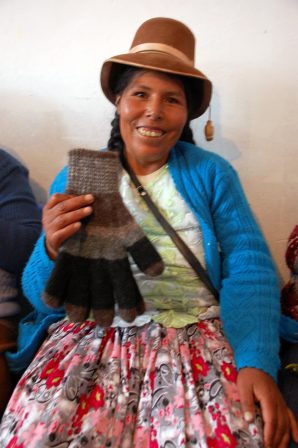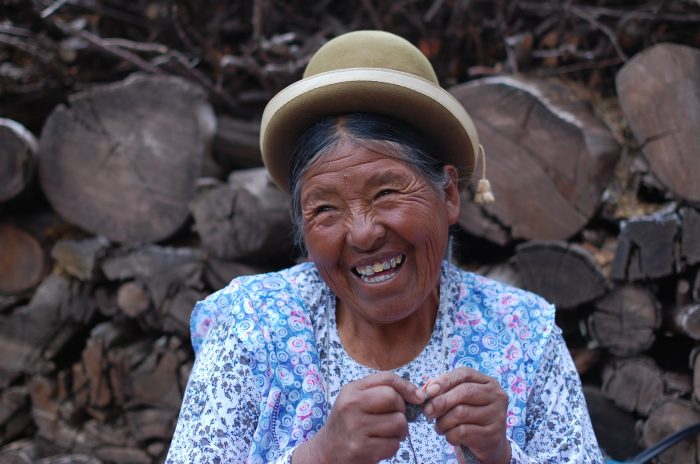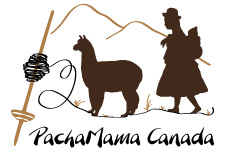SPINNING AND KNITTING
Here are a few of the many steps involved in the manufacture of our knitwear.
The majority of the artisans we work with are alpaca ranchers. They are directly involved in every stage of transforming alpaca wool from animal breeding to the finished product.
Please note these traditional methods are done solely by hand. No machines are used!


SHEARING
Shearing of the alpacas takes place annually, from October to December. It is the spring season in South America, and time for the ranchers to take out their shearing scissors to clip their animals. Electric clippers are not commonly used, most often because the shearing locations simply do not have access to electric power or it is too expensive. The alpaqueros handle their scissors deftly, however, and shearing is done efficiently and without harm to the animals.
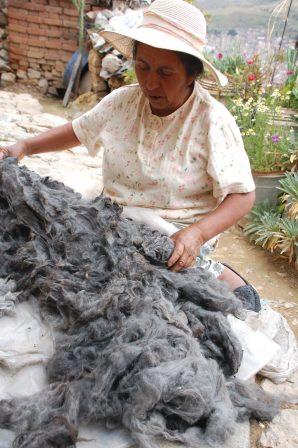
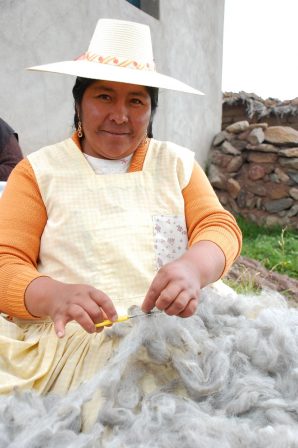 FIBER SORTING AND CLEANING
FIBER SORTING AND CLEANING
The fleece is shaken out to remove the maximum amount of dust and dirt, but it is crucial to complete the work by hand. It may take several hours!
Next, the different fiber qualities are classed.
Coarse hair (ex. on the legs) is removed and the finer fiber is separated. The artisans divide the baby grade fiber which will be used for scarves from that of intermediate quality (fleece) which will be used for mittens. Colours are also categorized since different shades can be found on the same animal.
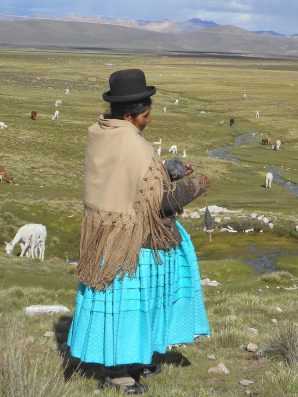
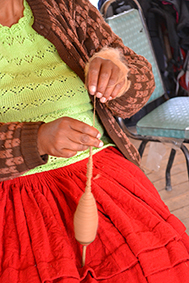 SPINNING
SPINNING
Alpaca fiber is spun by hand on a spindle, the predecessor of the spinning wheel. It is a tool very well suited to the lifestyle of our Peruvian artisans.
Peruvian alpaca ranchers move with their animals as shepherds did in the past. Each day, they walk several kilometers with their animals to well-known water sources and pasture. On the high plateaus of the Andes, these pastures are vast expanses and most of them are not fenced. The ranchers therefore accompany their animals for the entire day.

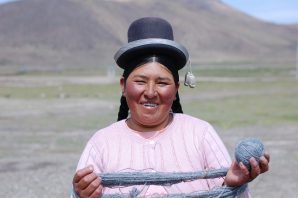 TWISTING
TWISTING
At this stage a single thread is twisted together with another to obtain a double stranded yarn.
It is very common in Peru to see men working the alpaca fiber, especially the spinning and twisting.
KNITTING
Rosa in action! She is knitting socks.
In the Andes, the artisans often work outdoors while doing agricultural work. This video was made during a potato harvest, at over 3800 meters altitude, on the shore of Lake Titicaca.
As with most of her knitting compatriots, Rosa has been spinning and knitting since a very young age. You can see this in how quickly she works! As soon as she has a minute, out come the knitting needles! You can hear her converse with her companions in Spanish and also in Aymara, their native tongue.
QUALITY CONTROL AND TRAINING
We have been working to improve the quality of the knits with the artisans of the Arte-Aymara Association since 2004. Since our beginnings, the knitters have made giant leaps in their craft and have attained very high-quality standards. Of course, we have contributed to this through our continuing education, but the credit is due to the fact that the artisans share their knowledge and help one another. Each product goes through two to three rounds of quality control carried out by experienced artisans. Measurements, knitting quality, finish, softness and many other criteria are meticulously inspected and corrected if necessary.


PRIDE IN THE FINISHED PRODUCT!
For the Peruvian artisans, the fact that their knitwear is worn in a place as far away as Canada gives them immense pride. Thank you!
